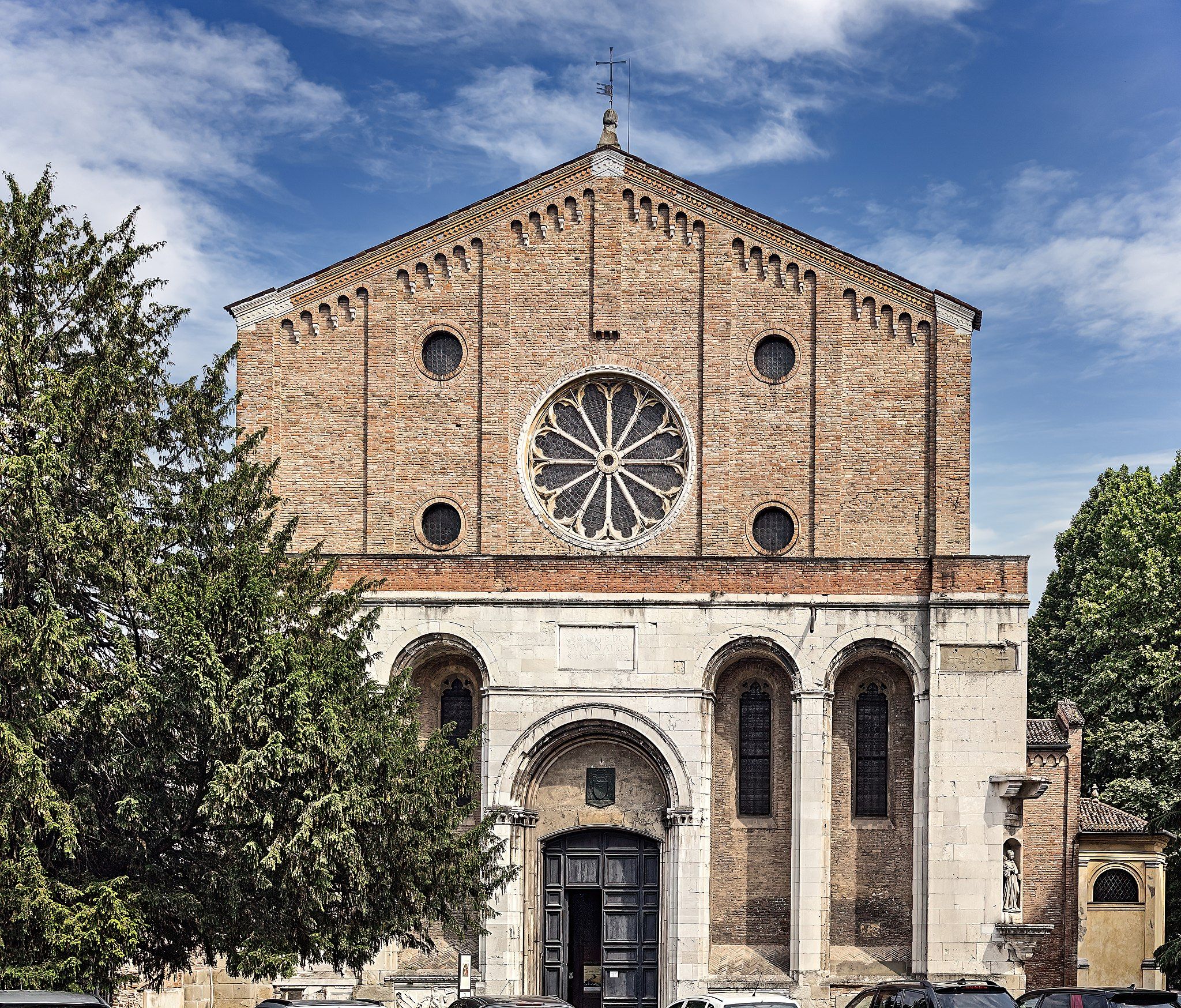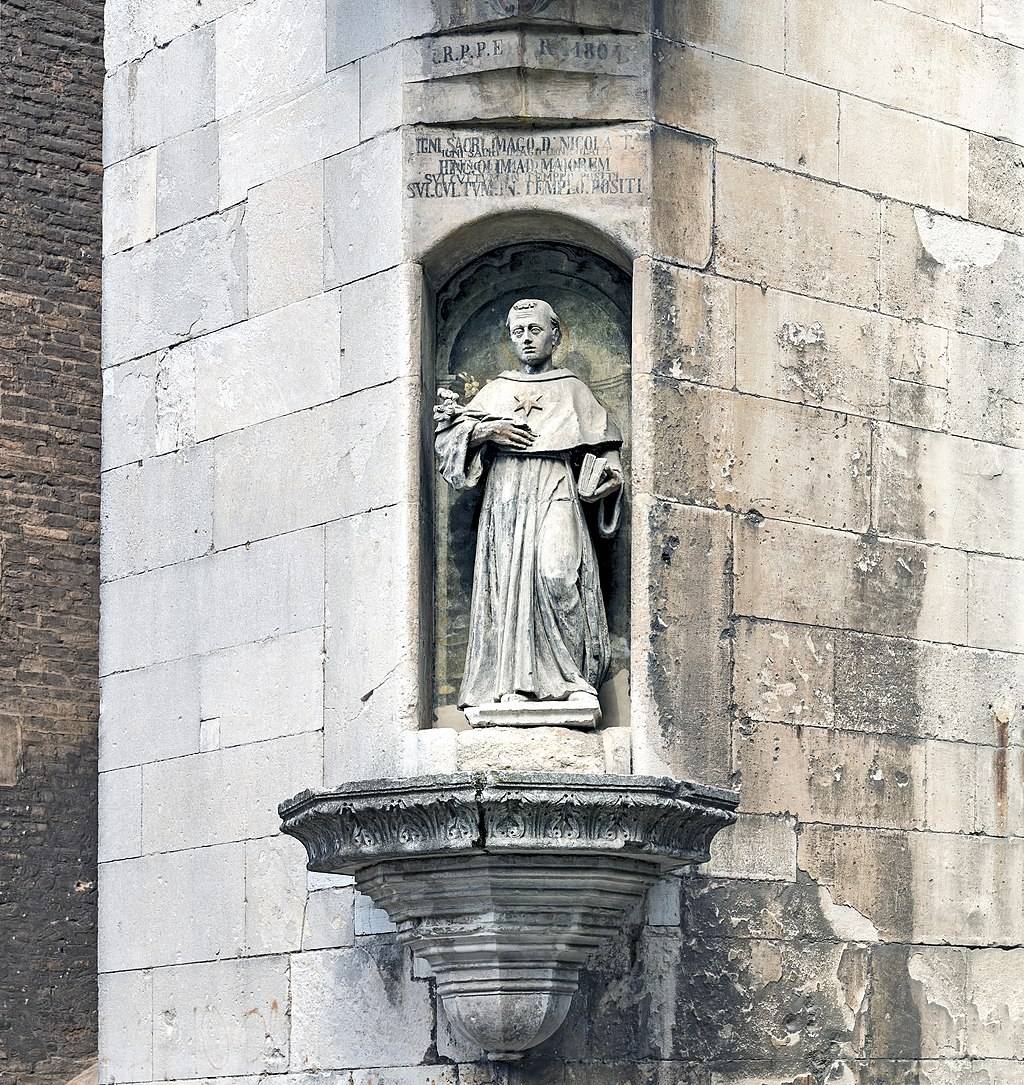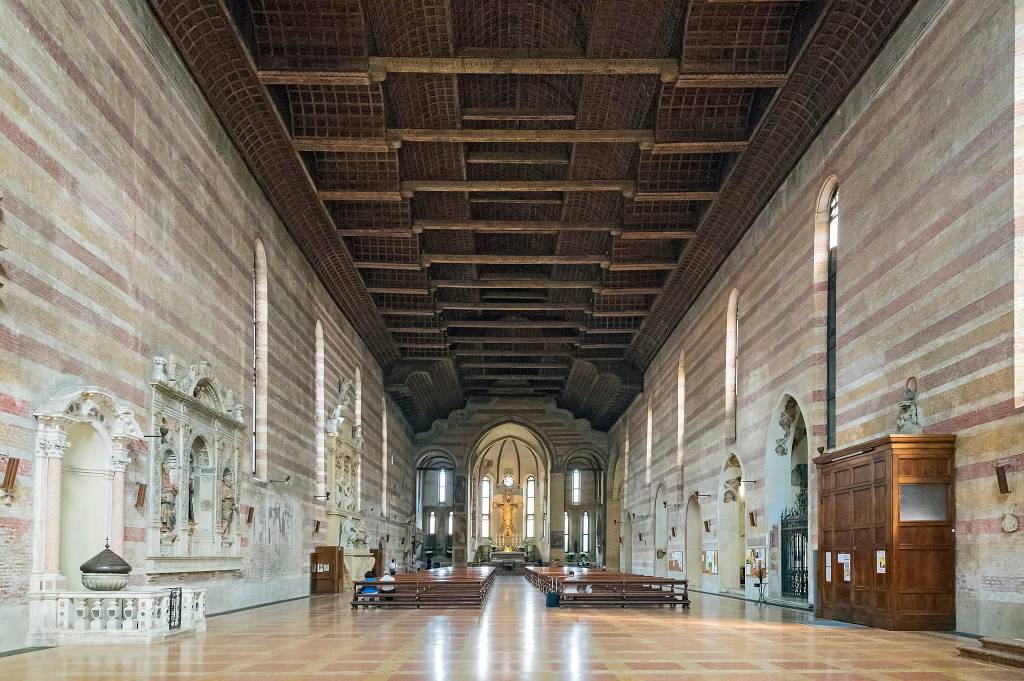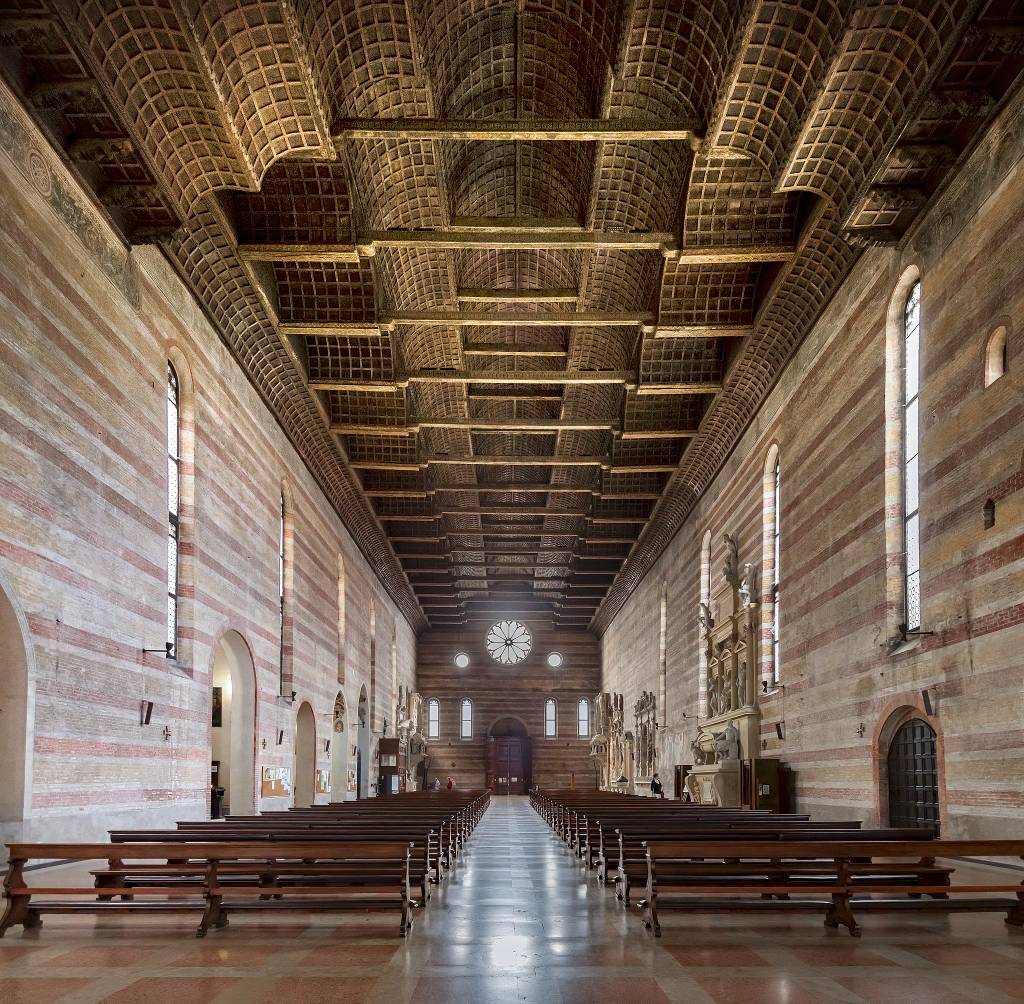Church of the Eremitani
The church, partially destroyed in 1944, preserves the remains of the splendid frescoes painted by Guariento and Andrea Mantegna

The Church of the Eremitani was built between 1260 and 1306 for the hermit friars of Saint Augustine and dedicated to the saints Philip and James. In the 14th century, it became one of the most important churches in Padua and was decorated by the greatest artists working in the city, such as Andrea Mantegna and Guariento.
The church was heavily damaged on 11 March 1944 by an aerial bombardment of the Allied Forces, which destroyed the roof and the facade and caused the collapse of the Ovetari Chapel, the Dotto Chapel, and part of the Great Chapel. This is considered Italy’s most severe cultural loss suffered during the Second World War.
After the war, the church was rebuilt under the Veronese architect Ferdinando Forlati, who tried to reuse the material recovered from the rubble. The 88 thousand fragments of the destroyed frescoes by Mantegna have been relocated and archived in Rome. Then, after a long restoration and reconstruction process based on old photographs and specially developed software, the overall design of a masterpiece otherwise lost forever was completed in 2004.
The external aspect of the Church is characterised by the warm tone of the exposed brick, which forms the upper part of the tall facade with a beautiful central rose window. The lower part of the facade is a stone loggia with five arches, the central one serving as the large access portal.
The interior has a single nave with an amazing wooden ceiling that reminds me of a hull of a boat. The original ceiling was the work of architect Brother James of the Eremites, using timber remaining from the construction of the roof of the Palazzo della Ragione, also built on his design. After World War II it was rebuilt following the original model. Along the walls are the tombs of famous people, including those of Jacopo II and Ubertino Da Carrara and the mausoleum of the humanist Marco Mantova Benavides.
The frescoes of the fourteenth century
Towards the third decade of the 1300s, artists from Venice were called to paint the first cycle of frescos in the Dotto Chapel, beside the Great Chapel. These included a Hierarchy of Angels, later re-frescoed by Altichiero.
The Great Chapel is decorated with a cycle of frescoes by Guariento, made between 1361 and 1365 and inspired by those painted by Giotto in the nearby Scrovegni Chapel. The surviving frescoes after the war destruction cover only the left (northern) wall, with the Stories of St. Philip and St. Augustine in the three upper registers and the monochrome plinth the allegories of The Planets and The Seven Ages of Man. Complex both in scale and variety of subject matter, these works show an evolution in the artist's mastery of perspective, creating a much more convincing illusion of three-dimensional space compared to his earlier frescoes in the Chapel of the Palazzo Carrarese.
In the Chapel of the Cortellieri, located on the right side of the nave, there are some remains of a pictorial cycle created by Giusto de 'Menabuoi around 1370 depicting the Glory of St. Augustine with the Virtues and the Liberal Arts. This chapel's innovative and peculiar aspect is the commission coming from a female client, the noblewoman Traversina Cortellieri. This was a funeral chapel dedicated to her son Tebaldo. This unusual commission for the fourteenth century will be followed, a few years later, by that of Fina Buzzaccarini for the decoration of the Cathedral Baptistery by the same artist, trained in Giotto's Milanese workshop, Giusto de' Menabuoi.
The Spisser Chapel, dedicated to Saints Cosmas and Damian and located to the left of the main altar, is better known by the name of Sanguinacci Chapel, from the family that had the patronage. Here, under the commission of the German nobleman Enrico Spisser, at that time in the service of the Carraresi, was created Madonna enthroned with Saints and an offerer. Art historians have a long-standing debate regarding the author of this fresco, alongside Madonna with baby Jesus found in the Sacristy, their attribution being given to either Jacopo da Verona, Altichero da Zevio or Giusto de' Menabuoi.
Ovetari Chappel
In the right arm of the transept of the Eremitani Church, there is the Ovetari Chapel, famous for the cycle of frescoes painted by Andrea Mantegna between 1448 and 1457.
The chapel’s decoration was commissioned by the notary Andrea Ovetari and designated to a heterogeneous group of artists: Antonio Vivarini, Giovanni D'Alemagna, Ansuino da Forlì, Nicolò Pizzolo, and a young Andrea Mantegna, who later assumed the leading role in decoration.
The paintings tell the Stories of Saint Christopher and Saint James, made up of six episodes arranged on three superimposed levels, called lower, middle and upper register. The south wall, entirely painted by Mantegna, is dedicated to the Stories of Saint James, while the north wall illustrates the Stories of Saint Christopher.
Among these, the Martyrdom of Saint Christopher and the Transport of the beheaded body of Saint Christopher, painted as a single large scene, are universally considered among the great masterpieces of Mantegna. These were removed from the church in 1880 for restoration and relocated to save them from the damp walls. Thus, unwittingly, they were saved from the bombs in the Second World War.
In the cloisters of the former convent adjacent to the church, there are the Eremitani Civic Museums, which group the Archaeological Museum and the Museum of Medieval and Modern Art.
Mantegna, St. James Led to his Execution
A conversation with Dr. Beth Harris and Dr. Steven Zucker in the Ovetari Chapel
Steven Zucker, "Mantegna, St. James Led to his Execution," in Smarthistory, July 17, 2020, accessed April 17, 2022, https://smarthistory.org/mantegna-saint-james-led-to-his-execution/.
We welcome all contributions, no matter how small. Even a spelling correction is greatly appreciated.
All submissions are reviewed before being published.
Continue to changelog-

© 'Church of the Eremitani, facade. Statue of Saint Nicholas of Tolentino' by Didier Descouens is licensed under CC BY-SA 4.0 Attribution copied to clipboard Failed copying attribution to clipboard -

© 'Inside, Church of the Eremitani' by Didier Descouens is licensed under CC BY-SA 4.0 Attribution copied to clipboard Failed copying attribution to clipboard -

© ' Interior, the ceiling of the nave, which looks like an inverted hull, by the architect Giovanni degli Eremitani' by Didier Descouens is licensed under CC BY-SA 4.0 Attribution copied to clipboard Failed copying attribution to clipboard -

We welcome all contributions.
All submissions are reviewed before being published.
We welcome all contributions, no matter how small. Even a spelling correction is greatly appreciated.
All submissions are reviewed before being published.
Continue to changelogWe welcome all contributions, no matter how small. Even a spelling correction is greatly appreciated.
All submissions are reviewed before being published.
Continue to changelogWe welcome all contributions, no matter how small. Even a spelling correction is greatly appreciated.
All submissions are reviewed before being published.
Continue to changelogCategory
Cost
-
The most important Paduan complex of museums features the Archaeological Museum and the Museum of Medieval and Modern Art in a charming former convent.
-
160 m
The Scrovegni Chapel houses one of the most outstanding masterpieces of figurative art of all time, the complete fresco cycle created by Giotto
-
179 m
Part of the Eremitani Civic Museums complex, the palazzo houses the Museum of Applied and Decorative Arts and the Bottacin Museum in its rooms.
-
The Roman Arena of Padua was an amphitheatre used for gladiator games in the ancient Patavium. The Arena ruins are now part of the Giardini dell'Arena park.
-
In Padua, the pedestrian streets from the city centre are known as Liston, an area extending from Piazza Garibaldi all along to Prato della Valle.




